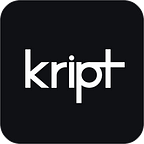Guide: What is a Security Token Offering
One of the latest ICO market trends is connected with the shift from utility to security tokens and the growing popularity of STOs. There is quite a lot of hype behind security tokens today and there are certain reasons for that. A security token offering is the next step towards legitimizing the way of raising funds in digital currency. STOs offer increased credibility and better alternative to traditional finance assets. They have a number of advantages over both, IPOs and ICOs.
Security tokens
Securities in the financial context are financial tools that have monetary value and can be traded. They can be classified as either equity or debt securities. So, securities are tradable financial assets such as bonds, options, stocks or other. Security tokens are crypto tokens that pay dividends or interest, share profits, or invest in other assets in order to generate profit for their holders. Security tokens usually derive their value from external tradable assets. The assets may be issued in the form of bonds, shares or any other financial instruments bringing passive income. They are subject to federal securities and regulations. As the assets represented by security tokens already exist in the physical world, they act like a bridge between legacy finance and the blockchain world.
Cryptographic tokens were divided by the SEC and FINMA into two broad categories — utility tokens and security tokens. Tokens can be considered to be security in case they pass the Howey Test. The test is employed to check if the token corresponds to certain requirements and in case the token has all the following elements, it can be considered to be security:
- the investment involves money or assets;
- the investment of money or assets are in a common enterprise;
- there is an expectation of profits from the investment;
- part of profit arises from the efforts of a promoter or third party.
ICO vs STO
A security token offering (STO) appeared not so long ago as another option of initial coin offering (ICO). In fact, STO is quite similar to ICO in terms of the main idea which is a way of raising funds with the use of crypto tokens which are sold to investors during the campaign. The main difference between ICO and STO is the type of tokens offered for purchase during the initial sale. Tokens offered during ICO campaign are utility tokens, while during STO campaign is based on issuing and selling security tokens.
Unlike utility tokens, security tokens are backed by real assets which are subject to federal securities regulations. Their value is determined by these external assets. STOs are seen as more stable and legitimate comparing to ICOs, as they offer increased security and lower risks for potential investors. Some significant differences between ICO and STO are:
✔ Function. Security tokens offer ownership of asset while utility tokens provide access to protocols.
✔ Profit. Security tokens are expected to provide profits to investors, while in case of utility tokens no profits can be guaranteed.
✔ Regulation. STOs are regulated offerings with obligatory KYC, while ICOs are more usually unregulated token sales.
Examples of STOs
Polymath — an open decentralized protocol for issuing and trading security tokens. It provides businesses with an opportunity to launch security tokens on the blockchain and enables individuals to take part in STOs.
tZERO — a blockchain-based platform for capital markets. The goal of the project is to revolutionize capital markets providing a new solution for accessing capital and enabling secondary liquidity for traditionally illiquid investments.
Swarm Fund — the blockchain for private equity. It provides unique blockchain-based market infrastructure that enables investing cryptocurrency into real assets and deploying traditional capital into crypto markets.
Content kript.ioShare with your friends if you enjoyed this postDownload Kript on AppStore and GooglePlayFollow us on Telegram, Facebook, Twitter
